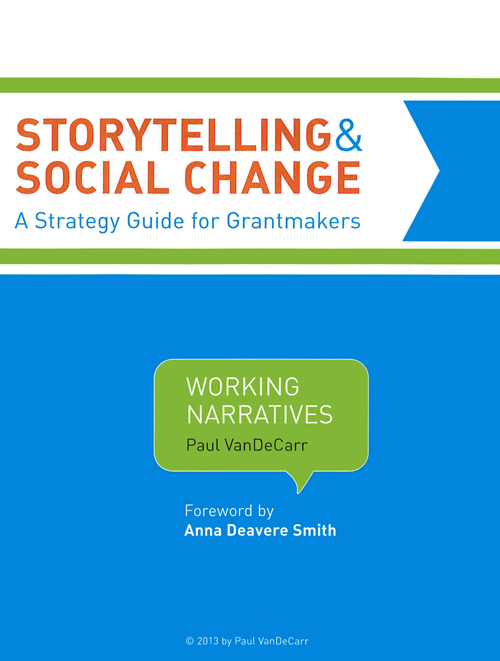Racial Equity
Grantmakers in the Arts (GIA) is committed to addressing structural inequities and increasing philanthropic and government support for BIPOC artists and arts organizations. Racial equity is a lens through which GIA aims to conduct all of its work, as well as a specific area of its programming.
Since 2008, GIA has been elevating racial equity as a critical issue affecting the field. To actualize this work within the sector, GIA published its Racial Equity in Arts Funding Statement of Purpose in 2015. Through webinars, articles, convenings, and conference sessions, GIA provides training and information to support arts funders in addressing historic and structural inequity through their grantmaking practices as part of an effort for racial justice as a means toward justice for all.
GIA believes that all oppressed groups should benefit from funding. We give primacy to race because racism is the means by which oppressed groups are manipulated into opposing programs that assist them. Therefore, Grantmakers in the Arts’ equity work – including our discussions of support for trans artists, artists with disabilities and for disability arts – is NOT race-exclusive but IS race-explicit. GIA’s vision for the future of our work is to increasingly reveal how the liberation of all oppressed people is interdependent.
GIA has made a strategic decision to foreground racial equity in our work for several reasons:
- Within other oppressed peoples’ communities (including women, members of the lgbtqi community, people with disabilities, and others), it has been well-documented that people of color still face the worst social outcomes.
- GIA feels that others’ strategies of combining considerations of race with other considerations too often result in racialized people being pushed into the background or ignored.
- The U.S.’ creation of race was established to keep oppressed peoples separate.
Unless we articulate our support for racialized peoples, while calling out this separation strategy, we inadvertently reinforce this separation strategy.
Specific themes of our racial equity programming include:
- The analysis of how funding practices create structural challenges for BIPOC (Black, Indigenous, People of Color)/ALAANA (African, Latinx, Asian, Arab, Native-American) organizations (Eurocentric quality standards, matching requirements, among others).
- The impact of these practices, as manifest in racialized disparities in levels of funding.
- An exploration of the use of coded language to justify racial inequity (i.e. referring to white audiences as “general” or “mainstream,” while organizations of color are “culturally-specific.”
When it comes to self-identifying language, GIA seeks to use terms that communicate our respect. We do not seek to impose language on members of any group. We respect the manner in which anyone prefers to self-identify. When referring to issues of racial equity, “we use the term BIPOC to highlight the unique relationship to whiteness that Indigenous and Black people have, which shapes the experiences of and relationship to white supremacy for all people of color within a U.S. context.” We take this explanation and practice from the BIPOC Project.
GIA has also used the racial and ethnic identifiers African, Latinx, Asian, Arab, and Native American. We have used African, Latinx, Asian, Arab, Native American – represented using the acronym ALAANA – because we know that many believe the term, “people of color,” conflates together entire groups of people and as a contrast to white. This results in a continued centering of whiteness as the norm and the standard from which other identities deviate.
GIA does not refer to organizations that are founded by, led by, and feature the work of ALAANA/BIPOC communities as “culturally-specific,” as we believe this term centers whiteness as the norm from which other organizations deviate.
GIA is committed to communicating respectfully. GIA does not ask that anyone self-identify with or use any term other than ones they prefer.
When the Network of Ensemble Theaters (NET) set out to produce MicroFest USA: Revitalize, Reconnect, Renew, we wanted to look at the positive impact that art and artists were having on communities around the country. Our intent was twofold: to acknowledge and advance the pioneering and current work of ensemble theaters committed to community-based practice and positive community change (placemaking), and to foster mutual learning with a wider spectrum of artists, cultural workers, and community partners also contributing to community well-being and social change (placemakers).
Read More...On this seventeenth anniversary of the Sphinx Organization’s work in the field, I felt compelled to speak to our field and nation as a whole regarding diversity, inclusion, and the state of American orchestras.
Read More...
Paul VanDeCarr. 2013, 42 pages, Working Narratives, http://workingnarratives.org/project/story-guide/.
Read More...Edited by Mary Stone Hanley, George W. Noblit, Gilda L. Sheppard, and Thomas Barone. 2013, 258 pages, Routledge
Read More...While the title of GIA’s 2012 Thought Leader Forum — Racial Equity in Arts and Culture Grantmaking — may have left something to be desired in the excitement department, the content of the discussions that took place was such that the two and a half days we spent together in June and two additional days we gathered in November revealed principles/approaches toward racial equity that I hope will have value to colleagues. The goals of the initial forum were as follows:
While I was volunteering at the Park Slope Armory evacuation shelter I asked for advice from a member of the clergy when I encountered a problem I couldn’t solve. He told me to follow my instinct. I said I didn’t trust my instinct; the situation was far beyond my experience. He responded, “This is your opportunity to stretch yourself.” A lot of stretching has been going on in the aftermath of Hurricane Sandy. People, organizations, and communities have been coming together to meet a challenge and stretch in ways we had no idea were pos-sible.
Read More...On October 12–13, 2012, a consortium of arts and social justice organizations hosted the Arts & Social Change symposium in Seattle. With inspiration, participation, learning, and community building as pillars, the goals of the event were to:
- inspire action and activism; to motivate for change
- have dialogue; make recommendations for systemic and social change
- gain new awareness; to listen, participate, communicate, share, and engage
- meet, to connect and build relationships with other networks beyond the symposium


